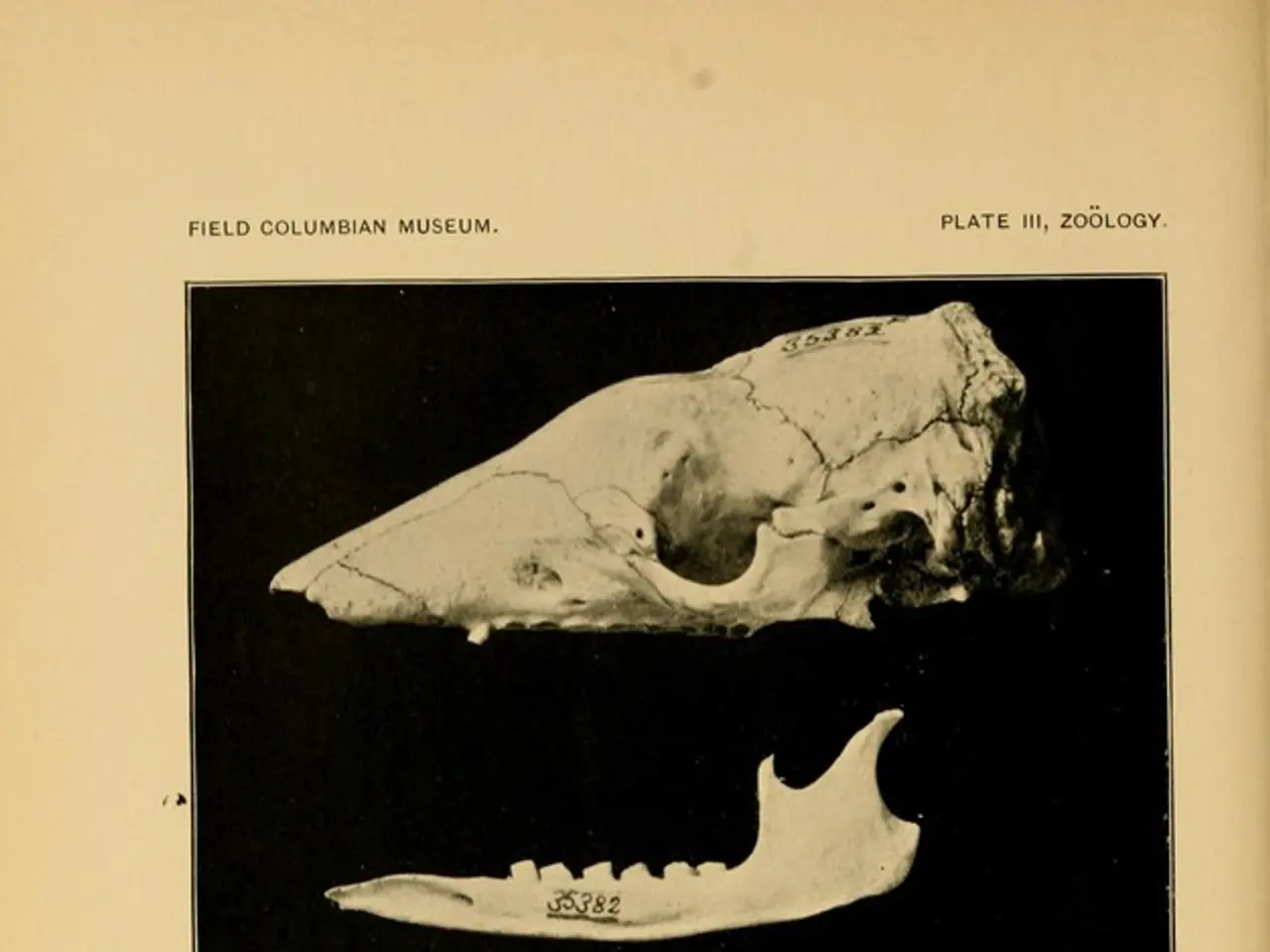Genetics and their impact on osteoporosis: An investigation
Osteoporosis, a condition characterised by weak bones prone to fractures due to decreased bone density, is a complex health issue with multiple contributing factors. Recent research has identified several genetic factors that play a significant role in the development and progression of osteoporosis.
Genes and Bone Health
Researchers have identified multiple genes that contribute to bone density and strength. For instance, the gene encoding the vitamin D receptor (VDR) and the COL1A1 gene are key players in this regard. Adequate consumption of calcium, Vitamin D, and protein is crucial for maintaining bone health, and these genes help regulate the absorption and utilisation of these essential nutrients.
Genetic Polymorphisms and Osteoporosis
Specific genetic factors associated with an increased risk of osteoporosis and bone fractures include polymorphisms and variants in multiple genes. For example, VDR gene polymorphisms (FokI, BsmI, TaqI, ApaI) affect vitamin D metabolism, bone mineral density (BMD), fracture susceptibility, and responsiveness to vitamin D supplementation.
Genome-wide association studies (GWAS) have identified genes such as WNT16, ESR1 (estrogen receptor 1), and SOST, which are linked to osteoporosis-related traits. These findings highlight the polygenic nature of osteoporosis.
Inflammation and Osteoporosis
MCP-1 and TRAIL genes, related to inflammation, have demonstrated moderate causal roles in osteoporosis risk. MCP-1 is associated with a 22% increased risk, while TRAIL is linked to a decreased fracture risk.
Genetic Disorders and Osteoporosis
Rare genetic disorders like osteogenesis imperfecta (defects in collagen production) and Ehlers-Danlos syndrome affect bone matrix integrity and lead to fragile bones, illustrating extreme examples of genetically driven fracture risk.
Environmental Factors and Genetics
These genetic factors interact with environmental elements such as hormonal status (e.g., low estrogen in postmenopausal women), race, lifestyle, nutrition, and inflammation, all contributing to the complex pathogenesis of osteoporosis and fracture susceptibility.
Prevention and Treatment
Understanding these specific genes offers potential for personalised prevention and treatment strategies. To prevent osteoporosis, one can consume foods that support bone health, increase physical activity, consider quitting smoking, limit or reduce alcohol consumption, and consider supplements when necessary.
The primary goal of osteoporosis treatment is to prevent fractures, relieve pain, and improve overall bone health. Treatment may include lifestyle recommendations such as gentle weight-bearing exercises, a balanced diet, and increasing calcium and vitamin D intake, as well as medications like bisphosphonates, estrogen-related therapy, and parathyroid hormone analogs.
The Role of Genetic Screening
Genetic screening could be a useful tool for predicting a person's future risk of osteoporosis and bone fractures. This knowledge can empower individuals to take proactive steps towards maintaining their bone health and reducing their risk of osteoporosis and fractures.
In conclusion, osteoporosis risk involves a multifactorial and polygenic genetic architecture encompassing genes regulating bone formation, resorption, vitamin D pathways, inflammation, and connective tissue integrity. By understanding these specific genes, we can move towards personalised prevention and treatment strategies, ultimately improving the lives of those affected by osteoporosis.
- The COL1A1 gene, along with the gene encoding the vitamin D receptor (VDR), contributes significantly to bone density and strength.
- Adequate intake of calcium, Vitamin D, and protein is essential for maintaining bone health, and these genes help regulate their absorption and utilisation.
- Specific genetic polymorphisms and variants in multiple genes, such as VDR gene polymorphisms, affect bone mineral density, fracture susceptibility, and response to vitamin D supplementation.
- Genome-wide association studies have identified genes like WNT16, ESR1 (estrogen receptor 1), and SOST, which are linked to osteoporosis-related traits.
- MCP-1 and TRAIL genes, related to inflammation, have moderate causal roles in osteoporosis risk, with MCP-1 associated with a 22% increased risk, while TRAIL is linked to decreased fracture risk.
- Rare genetic disorders like osteogenesis imperfecta and Ehlers-Danlos syndrome demonstrate extreme examples of genetically driven fracture risk, due to defects in collagen production and disturbances in bone matrix integrity.
- In addition to genetic factors, environmental elements like hormonal status, race, lifestyle, nutrition, inflammation, and cardiovascular health contribute to the complex pathogenesis of osteoporosis and fracture susceptibility.
- Genetic screening for osteoporosis can provide insight into a person's future risk, empowering individuals to take proactive steps towards prevention and maintaining their bone health.




